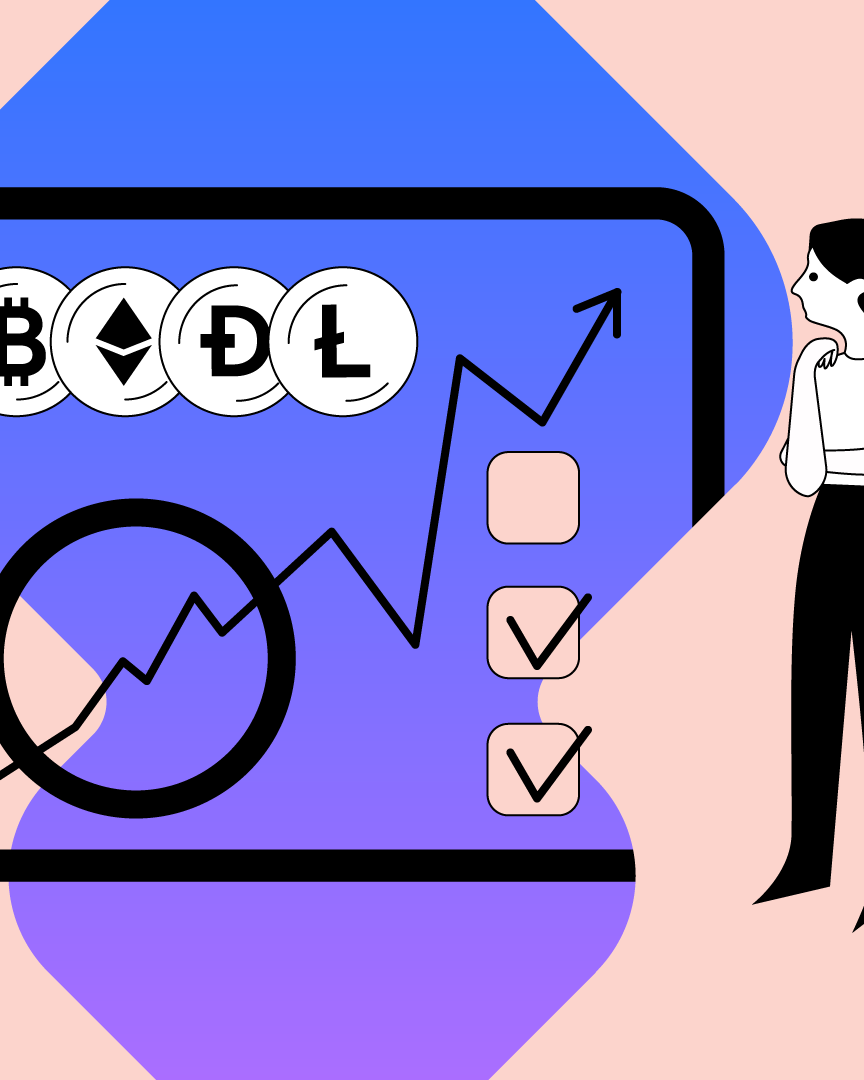2.04 Understanding market capitalization
This lesson centers on understanding cryptocurrency market capitalization.

Previously, we touched on the factors to bear in mind before starting to trade or invest in digital assets. In our next couple of lessons, starting with market capitalization, we look at the individual factors that will help you better understand cryptocurrencies and the overall market.
Market capitalization is one of the factors that help you determine whether a coin has widespread adoption or not. You can even estimate the influence and growth of the coin by looking at its market cap value.
This lesson centers on understanding cryptocurrency market capitalization.
Contents
- What is market capitalization?
- How is market cap calculated?
- Why is market cap important?
- Classification of cryptocurrencies based on market cap
What is market capitalization?
In the case of the stock market, market capitalization means the total value of all the shares of a company’s stock. Whereas, in the case of cryptocurrencies, market capitalization means the total value of all the coins that are mined or in circulation.
Market capitalization is the value of the total coins or tokens that are currently in circulation. It indicates the influence and popularity of a cryptocurrency in the market.
Market cap helps roughly measure how stable an asset is likely to be. Like how a bigger ship has more chances of navigating safely in heavy weather, a cryptocurrency with a large market cap is likely to be a more stable investment than a small market cap cryptocurrency. Large market cap cryptocurrencies are less volatile. On the contrary, digital currency with a small market cap is a more volatile and risky investment.
How is the market cap calculated?
The market capitalization of a cryptocurrency is calculated by the current price multiplied by the circulating supply.
Market capitalization = Current price of a crypto coin × Total circulating supply
While comparing the market cap of different cryptocurrencies, checking the current price and circulating supply is also important. The total supply of the coin may not give you a better idea of evaluating the performance of a cryptocurrency. So, circulating supply is important to check rather than the total supply.
Why is market cap important?
Most of us are interested in the price fluctuations of cryptocurrencies. But, checking price is only one way to look at a digital asset. It doesn’t give the whole picture of a digital currency. Experienced investors use market capitalization to understand the complete picture and compare different cryptocurrencies.
Let us take a scenario of comparing two cryptocurrencies using their market cap.
- Cryptocurrency A has 100,000 coins in circulation, and each coin is worth $2. Hence the total market cap of A is $200,000.
- Cryptocurrency B has 10,000 coins in circulation, and each coin is worth $4. The total market cap of B is $40,000.
Though the price of the second asset is more, its market cap is less than the first cryptocurrency. In this case, choosing the first asset is a better decision.
Market capitalization is important in comparing different cryptocurrencies before you make an investment decision. The growth and utility of a coin will be higher when its circulating supply is bigger.
Classification of cryptocurrencies based on market cap
Cryptocurrencies are classified into three categories based on their market cap.
- Large-cap cryptocurrencies - Bitcoin, Ethereum, and other cryptocurrencies that have more than a $10 billion market cap are called large-cap cryptocurrencies. They are considered safe investments as they have the potential for growth and offer high liquidity. Their popularity and market size minimize the volatility to an extent.
- Medium-cap cryptocurrencies - Digital assets with $1 billion - $10 billion market cap are classified as medium-cap cryptocurrencies. They are considered to have untapped growth potential. At the same time, they can be risky investments.
- Small-cap cryptocurrencies - Assets with less than a $1 billion market cap are called small-cap cryptocurrencies. They are regarded as highly volatile and risky investments. They are often prone to dramatic price fluctuations.
As we have already mentioned in the previous articles, it is always recommended to do proper research to understand the market before trading. Market capitalization is a useful metric when you compare the total value, market trends, and stability of digital currencies.
FR
This material does not constitute investment advice, nor is it an offer or solicitation to purchase any cryptocurrency assets.
This material is for general informational and educational purposes only and, to that extent, makes no warranty as to, nor should it be construed as such, regarding the reliability, accuracy, completeness or correctness of the materials or opinions contained herein.
Certain statements in this educational material may relate to future expectations that are based on our current views and assumptions and involve uncertainties that could cause actual results, performance or events to differ from those statements.
BB Trade Estonia OU and its representatives and those working directly or indirectly with BB Trade Estonia OU do not accept any liability arising from this article.
Please note that investing in cryptocurrency assets carries risks in addition to the opportunities described above.



















